Achilles Tendonitis
Pain in Your Heel? It Could be Achilles Tendonitis
Achilles tendonitis is an overuse injury of the Achilles tendon. The Achilles tendon is a thin band of tissue that connects your calf muscles on the back of your lower leg to your heel bone. Achilles tendonitis can be painful, however most cases can be treated at home with rest and self care. Achilles tendonitis is often caused by excessive walking/exercise, exercise without a proper warmup, or wearing shoes that provide little support/too old. When you have Achilles tendonitis you experience mild to severe pain and swelling in the back of your heel reaching up into the back of your ankle.
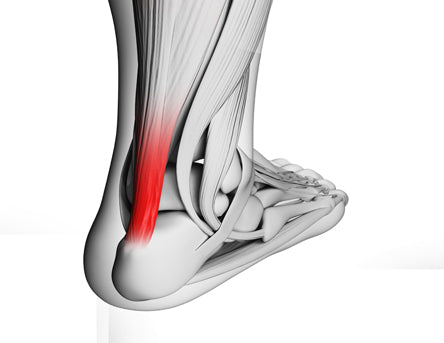
Left untreated, Achilles tendonitis can worsen and lead to a rupture/tear which will require medical attention.
We Recommend
-
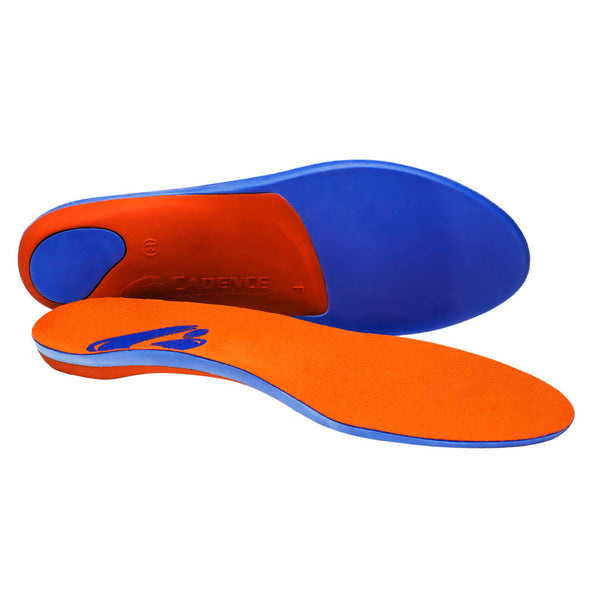
Cadence Original
$44.95
-
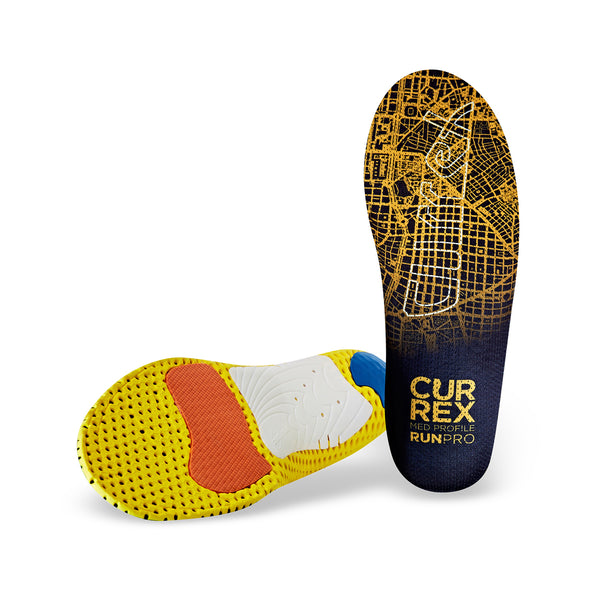
RunPro Medium
$54.95
-
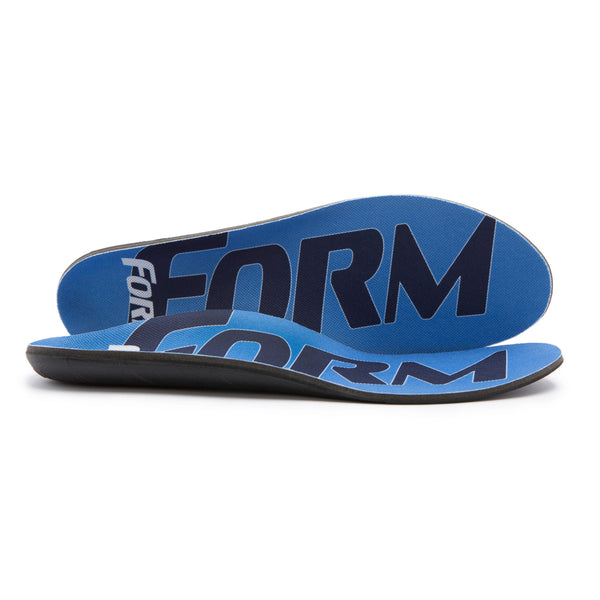
Maximum
$44.95
-
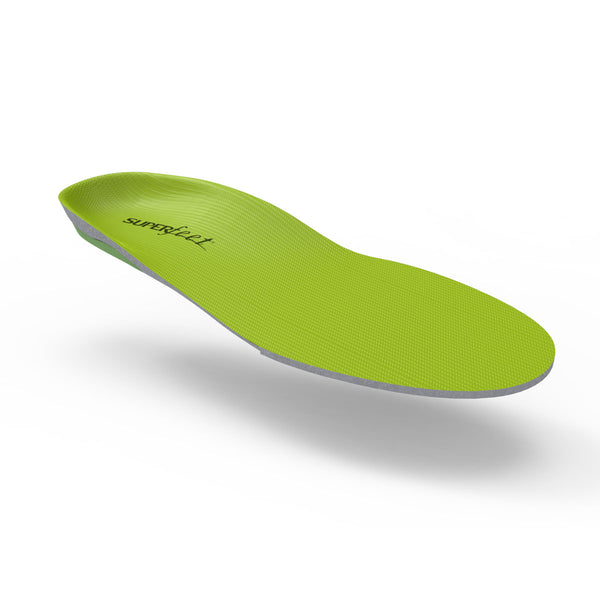
Browse our full collection of insoles for achilles tendonitis.
What is Achilles Tendonitis?
Achilles tendonitis is a common overuse injury of the Achilles tendon (your Achilles tendon attaches your calf muscles to your heel bone.) Achilles tendonitis most commonly occurs in runners who increase the intensity of their runs too quickly, or casual athletes who play sports such as tennis, basketball, or soccer without warming up.
There are two types of Achilles tendonitis:
Insertional Achilles tendonitis Insertional Achilles tendonitis affects the lower portion of the tendon where it attaches to your heel bone.
Noninsertional Achilles tendonitis Noninsertional Achilles tendonitis involves the fibers in the middle of the tendon, this affects younger people more often.
Symptoms of Achilles Tendonitis
Symptoms of Achilles tendonitis include:
- Pain the back of the heel
- Swelling the in the back of the heel
- Mild ache or severe pain in the back of the leg or above the heel after running or other sports activity
- Limited range of motion when flexing the foot
- The skin on your heel feels overly warm to the touch
What Causes Achilles Tendonitis?
Excessive exercise or walking without stretching are the primary causes of Achilles tendonitis. There are other factors that can contribute to this condition though. Causes of Achilles tendonitis include:
- Excessive walking or exercise
- Exercising without warming up properly
- Playing sports that require quick stops and change of direction
- Wearing shoes that are old
- Wearing shoes that don’t fit well
- Wearing high heels for prolonged periods of time
- Bone spurs
- Playing sports which require quick stops along with changing direction such as tennis
- Wearing shoes that are too soft and lack support
- Age, as your Achilles tendon weakens with age and requires proper warm up before physical activity
How can I Treat Achilles Tendonitis?
Home treatment of Achilles tendonitis can prove effective If you do not see improvement with home treatment, make sure to see a medical professional. If you are experiencing severe pain and your ability to walk is limited it may indicate the possibility of a tear in the Achilles tendon, which will require medical attention.
Treating Achilles Tendonitis at Home
For home treatment, the RICE method can help considerably with the swelling and pain. RICE stands for Rest, Ice, Compression, and Elevation and can prove effective for many minor injuries and strains. Stay off of your feet as much as possible for 1 or 2 days and take a longer break from the activity that may be causing the pain or soreness. The tendon will heal faster if you can avoid putting strain on it and use a compression bandage. Apply an ice pack for 10 to 20 minutes at least 3 times daily. This should help to reduce the swelling. Elevate your feet while applying ice and any time that you are sitting or lying down. Keeping your feet above the level of your heart will help to minimize the swelling.
Footwear to Relieve Achilles Tendonitis Pain
You can prevent/ease Achilles tendonitis and other injuries with supportive footwear. It is a good idea to always choose your shoes carefully and make sure they have proper support.
The shoes you wear while exercising should provide light cushioning for your heel and should have a firm arch support to help reduce the tension in the Achilles tendon. If you can bend your shoe in half it is a good indication that your shoe is not giving you the support you need to prevent injury. It is also important to replace shoes that are old or worn out and no longer give proper support.
When Is Surgery Needed to Treat Achilles Tendonitis
When home treatments do not prove to be effective, surgery may be required. If the condition worsens and does not get addressed your Achilles tendon can rupture, which will require surgical intervention and a long recovery.
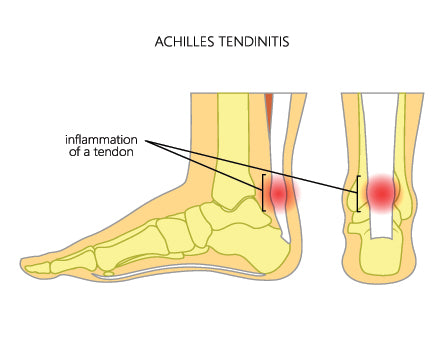
If you find that pain has noticeably increased and is severe you may have a ruptured tendon and should seek medical attention. Your doctor may present a few options for treatment, depending on how severe the tear is. Your doctor will typically refer you to an orthopedic surgeon who will decide which procedure is best.
How to Prevent Achilles Tendonitis
With good habits and proper warmup you can reduce your risk of Achilles tendonitis.
Stretches to Prevent Achilles Tendonitis
One of the best ways to prevent Achilles tendonitis is to stretch and warm up properly before you exercise or play sports. Additionally, it is important to increase your activity level gradually. If you are just beginning an exercise regimen, start slowly and gradually increase the duration and intensity of the training. This will help your body ease in and adapt to more strain to avoid injury.
Combine High and Low Impact Exercises
For those who play more intensive sports like basketball, make sure to mix in some lower-impact exercises to allow your body to recover and build strength. Swimming is an excellent form of low-impact exercise to compliment any workout routine.
Reduce Heel Size When Wearing Heels
For those who constantly wear high heels, it is important to reduce the heel size of shoes gradually when transitioning from high heels to flats. This allows the tendon to slowly stretch and increase its range of motion.





